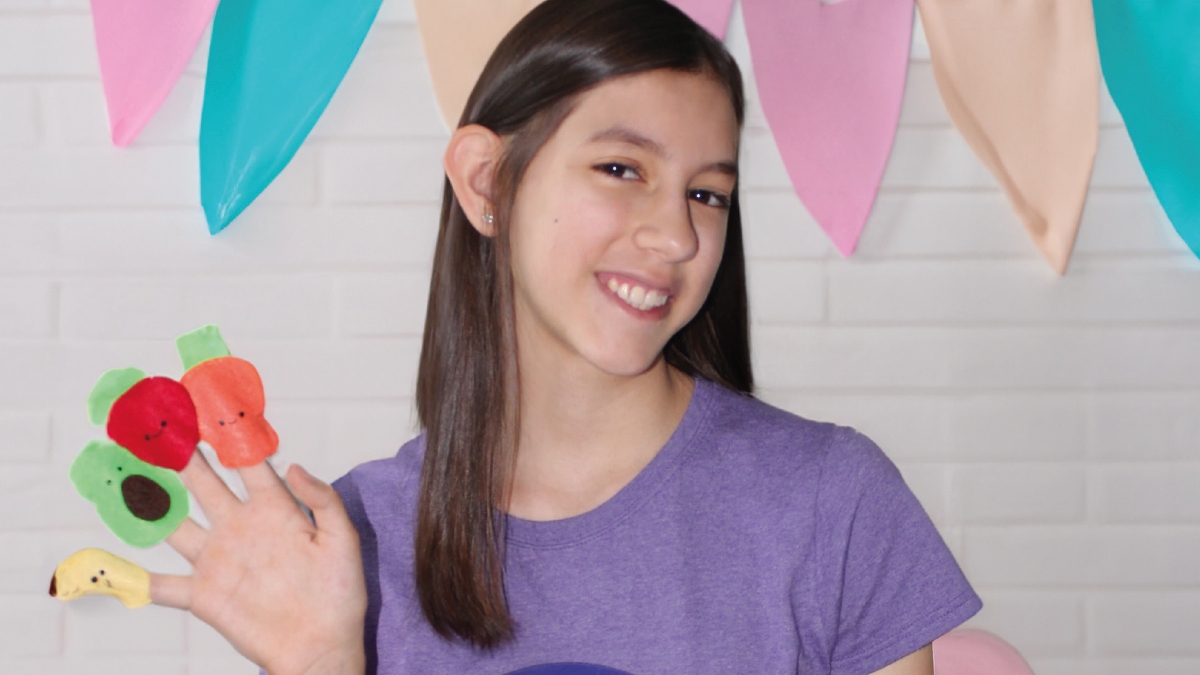Naomi Arianna, una pequeña de gran corazón que desea rescatar gatitos callejeros
De sólo 13 años de edad, Naomi Arianna Camino López, es una pequeña emprendedora juarense que hace tres años comenzó con un micronegocio, el cual tiene como objetivo rescatar gatitos callejeros.
Naomi, relató a la revista Visionarias que decidió nombrar su emprendimiento, “Arigato”, por su segundo nombre “Ari” y porque le encantan los gatos, motivo por el cual inició su negocio.
Idea de negocio
Recordó que, a los 10 años, durante la pandemia por Covid-19, comenzó a elaborar manualidades por pasatiempo, sin imaginar que éste se convertiría en un emprendimiento. Naomi mencionó que aprendió a coser gracias a su mamá, quien le enseñó e impulsó a crear sus productos, entre ellos lápices y llaveros de fieltro con figuras de mariposas, aguacates, cactus y flores. También, dijo se inspiró en fotografías de Pinterest, y después comenzó a desarrollar sus propias ideas.
Involucra a toda la familia
Gracias al apoyo de sus padres, el negocio comenzó a crecer, pues su madre le ayuda a coser y su papá a comprar los materiales, también sus hermanos en ocasiones la apoyan a venderlos.
Posteriormente, su mamá creó una página de Facebook donde publicita sus productos, además, acuden a bazares en los que presenta y comercializa su trabajo.
Para Naomi, ser emprendedora, le permite hacer y comprar lo que le gusta, como plumones de caligrafía, y a su vez, ayudar en la economía familiar. En este sentido, aconsejó a otros niños y adolescentes, que tienen el interés de emprender a “hacer lo que les gusta”.
Se cumple un sueño
El sueño de Naomi es ser veterinaria, “me gustaría rescatar gatitos de la calle y darlos en adopción”, dijo la adolescente.
Recuerda que siempre quiso tener un gato, sin embargo, en la casa donde vivían antes no contaba con suficiente espacio, por lo cual su papá le prometió que le dejaría tener una mascota, “si Dios les permitía tener una casa más amplia”; ahora con un jardín más grande, tiene tres felinos que rescató: Chipi, Choki y Cali.
Expectativa de vida
Cabe destacar, que la expectativa de vida de los gatos domésticos puede ir desde los 12 hasta los 20 años; sin embargo, en el caso de los callejeros, tienen una expectativa de vida muy corta, de dos a seis años, mientras que los mininos que tenían dueños, pero que son abandonados, sólo seis meses, pues en las calles están expuestos a un sinnúmero de riesgos.
Por ello, es de suma importancia tomar conciencia de la problemática que representa el no esterilizar y el abandono de mascotas.
Si estás interesado en apoyar al negocio de Naomi Arianna, puedes comunicarte al teléfono 656-179-4490, o bien, en la página de Facebook: Arte Arigato.
Arigato, a venture with a cause
Naomi Arianna, a little girl with a big heart who wants to rescue stray kittens
Only 13 years old, Naomi Arianna Camino Lopez is a little entrepreneur from Juarez who, three years ago, started a micro-business that aims to rescue stray kittens.
Naomi told Visionarias magazine that she decided to name her business “Arigato” after her middle name “Ari” because she loves cats, so she started her business.
Business idea
She recalled that when she was ten years old, during the Covid-19 pandemic, she started making handicrafts as a hobby without imagining it would become a business. Naomi mentioned that she learned to sew thanks to her mother, who taught her and encouraged her to create her products, including pencils and felt key chains with figures of butterflies, avocados, cacti and flowers. Also, she said photographs on Pinterest inspired her and then began to develop her ideas.
Involves the whole family
Thanks to the support of her parents, the business began to grow, as her mother helped her sew and her dad helped her buy the materials; also, her siblings sometimes supported her in selling them.
Later, her mother created a Facebook page where she advertises her products, and they also go to bazaars where she presents and sells her work.
For Naomi, being an entrepreneur allows her to make and buy what she likes, such as calligraphy pens, and at the same time, to help the family economy. In this sense, she advised other children and adolescents interested in entrepreneurship to “do what they like.”
Fulfilling a dream
Naomi’s dream is to be a veterinarian, “I would like to rescue kittens from the street and give them up for adoption,” said the teenager.
She remembers that she always wanted to have a cat; however, in the house where they lived before, she did not have enough space, so her father promised her that he would let her have a pet “if God allowed them to have a bigger house”; now with an enormous garden, she has three felines that she rescued: Chipi, Choki and Cali.
Life expectancy
It should be noted that the life expectancy of domestic cats can range from 12 to 20 years; however, in the case of strays, they have a very short life expectancy, from two to six years, while the cats that had owners but are abandoned, only six months, because in the streets they are exposed to countless risks.
Therefore, being aware of the problem of not sterilizing and abandoning pets is crucial.
If you are interested in supporting the Naomi Arianna business, you can communicate by phone 656-179-4490, or, well, on the Facebook page: Arte Arigato.

